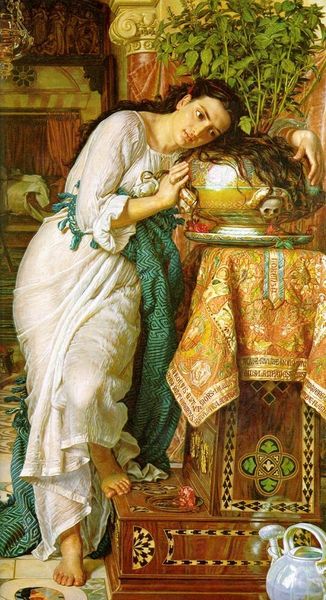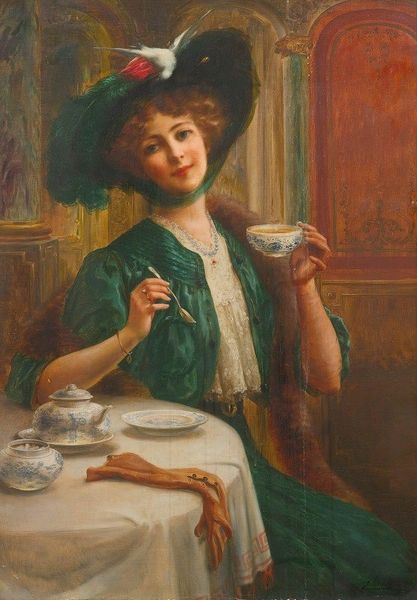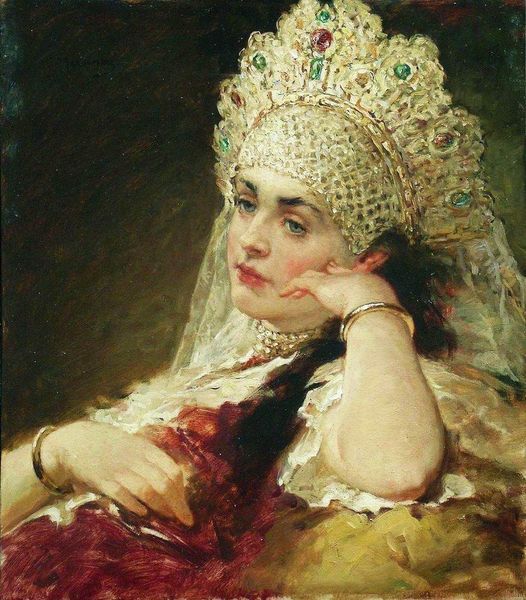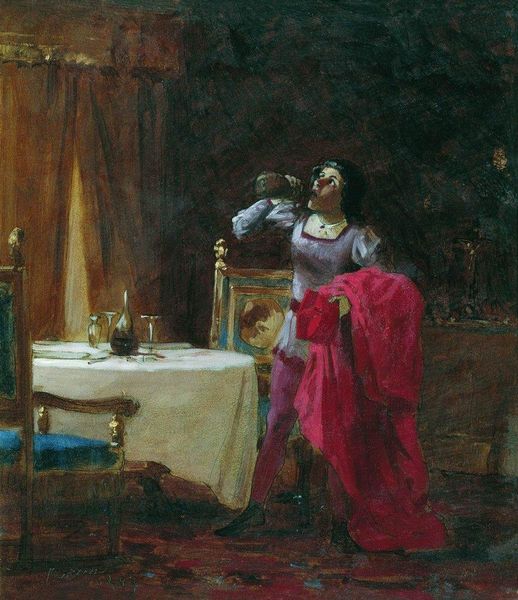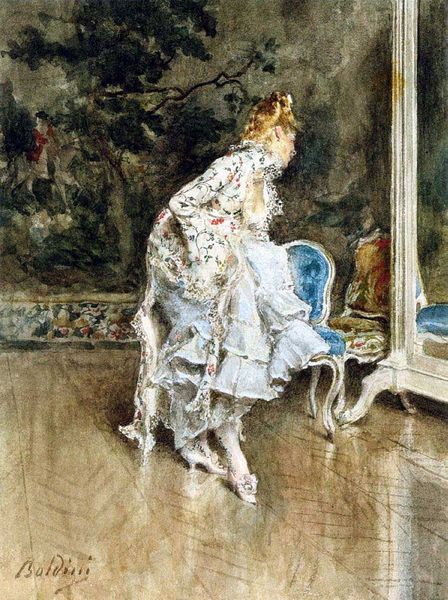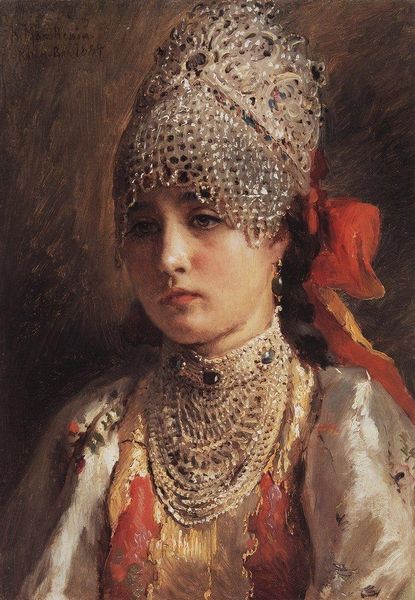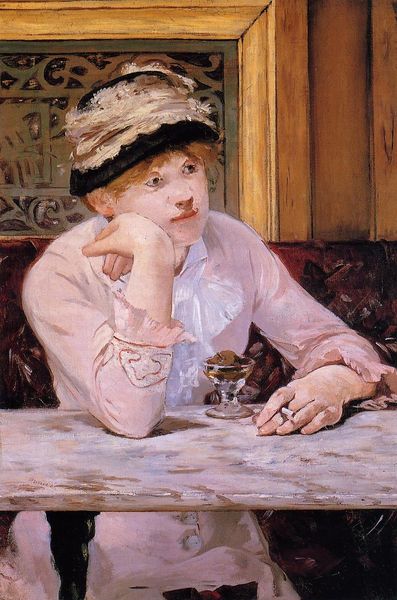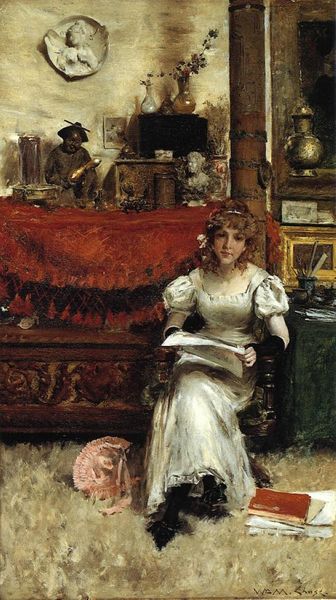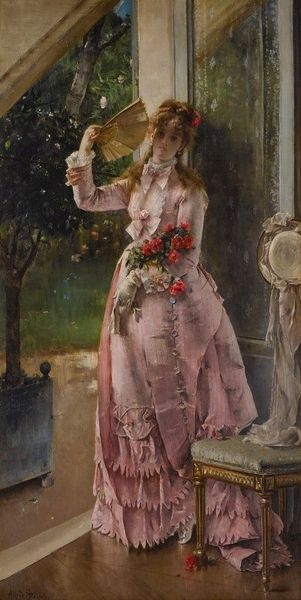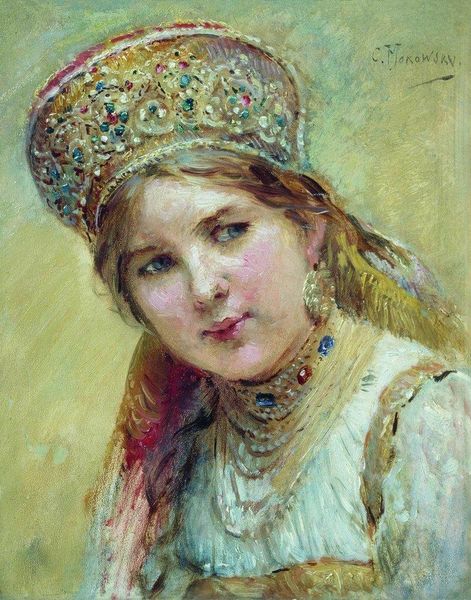
Copyright: Public domain
Editor: This is Konstantin Makovsky's "Tea Drinking," painted in 1914, using oil paints. The colors and textures give it such a cozy, intimate feel, almost like you're sharing tea with her. What do you see in this piece? Curator: I see a loaded portrait of Russian identity right before the cusp of monumental societal shift. This isn't just a genre painting, it's a deliberate construction. Consider the choice of attire—a meticulously rendered traditional headdress and ornamented clothing. Editor: How does that connect to societal shift? Curator: It is important to remember that Makovsky belonged to a generation of artists grappling with questions of national identity, modernization and cultural heritage in a rapidly changing society. Are we simply romanticizing the past? Is this preservation or performance? This "tea drinking" embodies the tension between embracing tradition and facing an unknown future. Editor: So, the act of drinking tea, which seems so simple, is actually much more complex in the painting? Curator: Precisely. What do you make of the woman's gaze and gesture? What emotions might she be embodying? The ritual, down to the samovar, speaks of both belonging and potential alienation as Russia moved towards revolution. Editor: It's a far cry from just a 'cozy' moment, as I initially saw it! Curator: Art has a knack for holding multiple truths. This piece beautifully highlights how personal rituals become intertwined with broader cultural and political narratives. Hopefully this interpretation expands how you view Russian art!
Comments
No comments
Be the first to comment and join the conversation on the ultimate creative platform.
